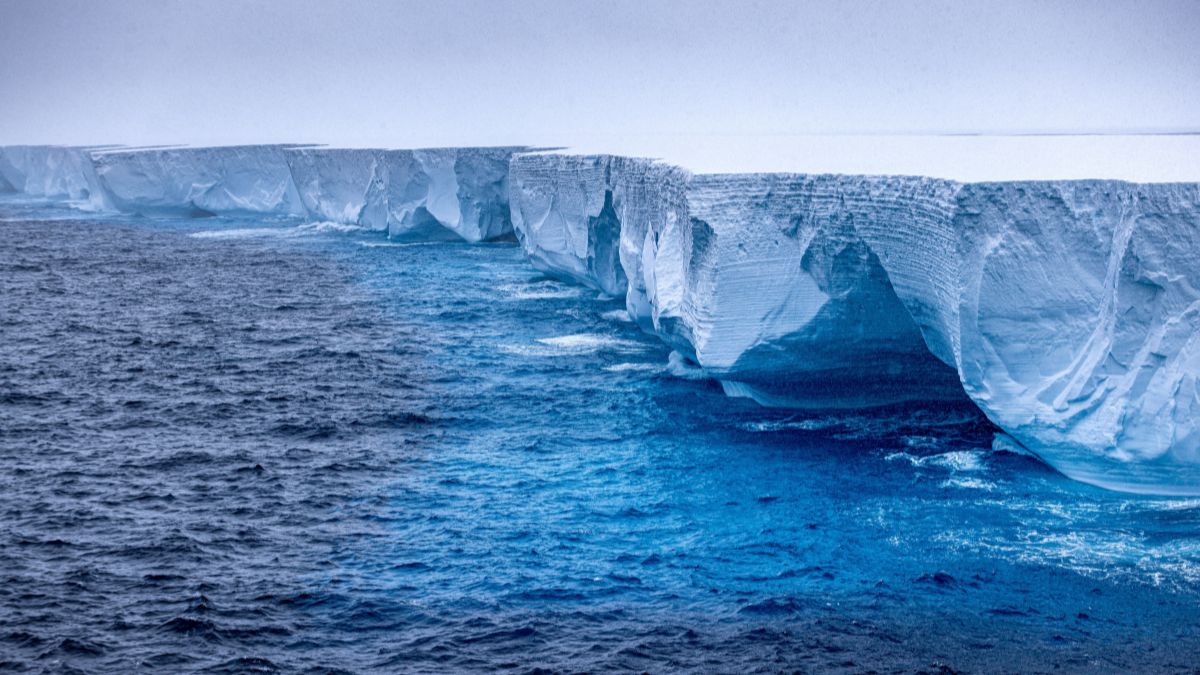Known as A23a, the world’s largest iceberg is once again on the move.
It has been drifting through the Southern Ocean after spending several months stuck, spinning in the same location.
A23a has claimed the title of “largest current iceberg” multiple times since the 1980s, though it has occasionally been overtaken by larger, yet shorter-lived icebergs, such as A68 in 2017 and A76 in 2021.
ALSO READ | A23a: World’s largest iceberg that refuses to melt. What’s holding it back?
The iceberg started moving northwards in 2020 but had been stuck since spring, caught in a rotating column of water near the South Orkney Islands.
Mega A23a iceberg is on the move
At 3,800 sq km (1,500 sq miles), A23a is more than twice the size of Greater London. It originally broke free from Antarctica in 1986. However, it soon became stuck near the coast.
Due to its massive depth, the iceberg’s bottom became stuck on the Weddell Sea floor, part of the Southern Ocean, where it was stuck for over 30 years. It started moving northwards in 2020 but had been spinning in place since the spring after becoming trapped in a rotating water column near the South Orkney Islands.
On Friday, the British Antarctic Survey (BAS) confirmed that A23a is now drifting further north.
Dr Andrew Meijers, an oceanographer at the BAS, said, “It’s exciting to see A23a on the move again after periods of being stuck,” according to BBC.
“We are interested to see if it will take the same route the other large icebergs that have calved off Antarctica have taken. And more importantly, what impact this will have on the local ecosystem.”
Meijers and the BAS team are studying the effects of large icebergs as they move through ecosystems.
Scientists have said that while A23a likely broke off as part of the natural ice shelf growth cycle and will not contribute to rising sea levels, climate change is still driving concerning shifts across Antarctica. These changes could have catastrophic implications for global sea level rise, CNN said in a report.
Throughout the iceberg’s journey, scientists have been analysing its erosion and studying the role sea ice plays in global ocean cycles of carbon and nutrients.
ALSO READ | The world’s biggest iceberg, A23a, is on the move after 30 years: Is it a concern?
Laura Taylor, a biogeochemist who collected water samples around the iceberg, said in a statement, “We know that these giant icebergs can provide nutrients to the waters they pass through, creating thriving ecosystems in otherwise less productive areas.”
“What we don’t know is what difference particular icebergs, their scale, and their origins can make to that process.
“We took samples of ocean surface waters behind, immediately adjacent to, and ahead of the iceberg’s route. They should help us determine what life could form around A23a and how it impacts carbon in the ocean and its balance with the atmosphere,” she was quoted as saying by CNN.
A23a - the world’s largest iceberg
A23a is an iceberg that is approximately 4,000 square kilometres. It originally broke away from Antarctica’s Filchner Ice Shelf in 1986 but was stuck in the Weddell Sea, resembling a type of “ice island.”
The iceberg calved from the Filchner Ice Shelf during a major outburst event on the White Continent. At the time, it hosted a Soviet research station, which reflects how long ago the event occurred.
Concerned that equipment at the Druzhnaya One base would be lost, Moscow dispatched an expedition to retrieve it. Despite this, the thick keel of the iceberg anchored it firmly to the Weddell Sea’s muddy floor, preventing its movement.
British Antarctic Survey glaciologist Oliver Marsh noted that it is rare to see such a massive iceberg in motion, so scientists will closely monitor its path.
As A23a picks up momentum, it will likely enter the Antarctic Circumpolar Current, which will guide it into the Southern Ocean along a route known as “iceberg alley.” This path is where similar massive icebergs drift through dark waters.
There is a possibility that A23a could become grounded near South Georgia Island. This raises concerns for the region’s ecosystem, as millions of seals, penguins, and seabirds breed on the island and rely on its surrounding waters for food, Reuters reported.
If A23a grounds itself in this area, it may disrupt its feeding routes and become a threat to the local ecology.
A68a: Previously the world’s biggest iceberg
Before A23a, the title of the world’s largest iceberg belonged to A68a, which was three times the size of London and weighed an estimated one trillion tonnes.
It was on a collision course with South Georgia Island, raising fears it would devastate the seafloor and marine ecosystems.
However, A68a stopped roughly 100 miles from the island before melting away completely without causing heavy damage, according to The Independent.
With inputs from agencies
)